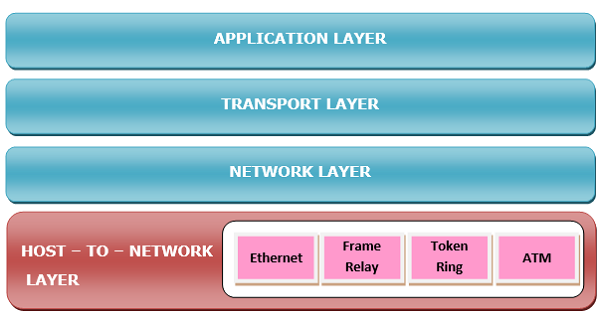
 Data Structure
Data Structure Networking
Networking RDBMS
RDBMS Operating System
Operating System Java
Java MS Excel
MS Excel iOS
iOS HTML
HTML CSS
CSS Android
Android Python
Python C Programming
C Programming C++
C++ C#
C# MongoDB
MongoDB MySQL
MySQL Javascript
Javascript PHP
PHP
- Selected Reading
- UPSC IAS Exams Notes
- Developer's Best Practices
- Questions and Answers
- Effective Resume Writing
- HR Interview Questions
- Computer Glossary
- Who is Who
The Host-to-Network Layer in TCP/IP Model
The host-to-network layer is the lowest layer of the TCP/IP model and is concerned with the physical transmission of data. It is also called a network interface layer or link layer. It can be considered as the combination of physical layer and data link layer of the OSI model.
The functions of this layer are −
- It defines how bits are to be encoded into optical or electrical pulses.
- It accepts IP packets from the network layer and encapsulates them into frames. It synchronizes the transmission of the frames as well as the bits making up the frames, between the sender and the receiver.
- It states the transmission mode, i.e. simplex, half duplex or full duplex
- It states the topology of the network, i.e. bus, star, ring etc.
The protocols that this layer supports are −
- Ethernet
- Frame Relay
- Token Ring
- ATM
The following diagram depicts the host-to-network layer in the TCP/IP protocol suite −


Advertisements
